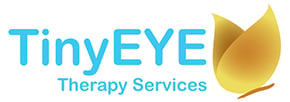
There has been a lot of talk about “preparing our students for the future they are going into, rather than the world that we came from.” What does that mean, exactly?
The advent of technology has created two categories of people: those who grew up with digital technology and those who did not. Those who were introduced to technology later in life are called ‘digital immigrants’. Those who grew up with digital technology are referred to as ‘digital natives’.
There have been many studies conducted on the manner in which digital natives learn. We are now teaching the first generation of students to grow up entirely as digital natives; students who think about and process information in an entirely different way than we, as digital immigrants do.
Blackboard Inc. describes why “the classroom isn’t enough” for digital natives in this video:
In order to be able to teach these students in a manner that they understand and can become engaged with, it is our responsibility to explore the technological options available, especially for children enrolled in special education.
Technology has been described as the ‘great equalizer’ for children with special needs. A full array of assistive technology and devices has been developed that helps these children on a day-to-day basis. Examples include alternative keyboards, electronic pointing devices, and text-to-speech. Even wheelchairs were once considered to be a revolutionary assistive technology. TinyEYE’s system is another example of assistive technology. Through our ‘traditional’ therapy platform, students connect with their therapists online, ensuring that they are receiving speech or occupational therapy regardless of school or therapist location. These students are excited to meet with the therapist, and our platform keeps them engaged and learning. Earlier this year, we introduced the next generation of our service, robots.
Through these robots, TinyEYE Therapists are able to engage with children directly within their environment. They are able to interact with the world and the people surrounding the student, further influencing the child’s ability to grow and succeed. Much like the wheelchair, TinyEYE’s robot is an assistive technology which allows the student to stay involved with his or her classmates, only this time it is by allowing the therapist to keep up with the student.
Technology is also known for its tendency to change rapidly. The majority of digital natives are what is called ‘early adopters’ – those who embrace and start using a new technology as soon as it is available. Many educational institutions may be hesitant to introduce technology into the classroom due to the ensuing ‘rat race’ – keeping up with the latest and greatest trends. TinyEYE takes the stress out of technology for these educators, as wells as for the therapists involved. We are committed to continuous research and development to ensure that allow your students to remain at the forefront, adapting to the changes in technology as they come.
Want to find out if online therapy or a robot is the right fit for your school?
This is part of a 12-week blog series on Robots and Online Therapy by TinyEYE Therapy Services.
Previous topics:
- Four Common Misconceptions about Online Therapy: Busted
- Q&A: Robots in Schools - Your Questions, Answered
- Can a robot REALLY teach my students?
- Innovation Sensation – Teletherapy All Grown Up
- Students LOVE Innovative Speech Therapy Technology in the Classroom
- When Worlds Collide: TinyEYE Therapy Services brings Robots into the Classroom


